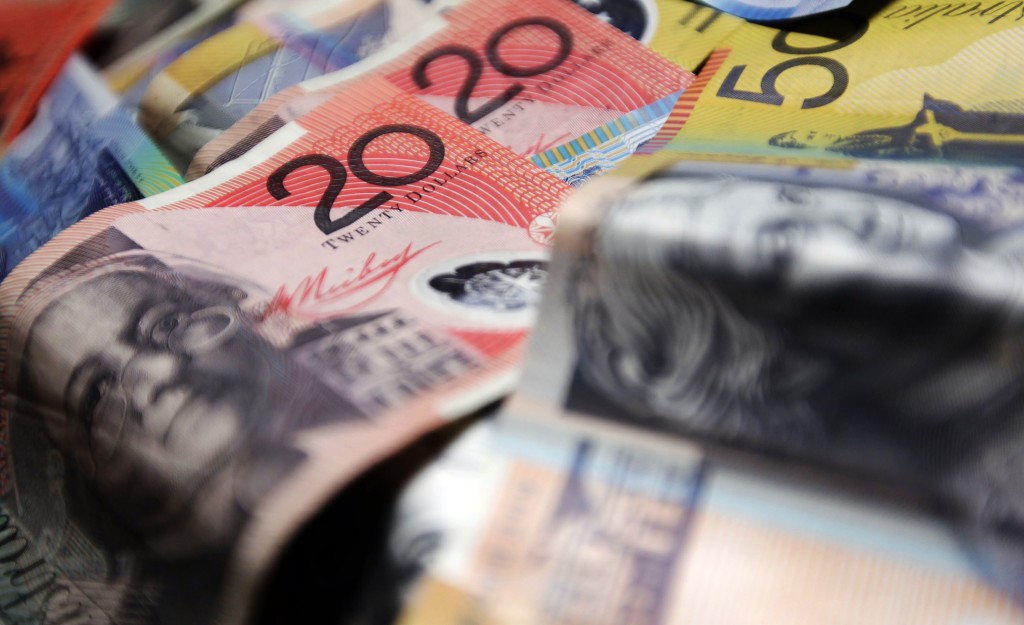Inflation picked up in Australian in the second-quarter of 2019, but is still well bellow the RBA’s 2.0% target. As the Australian central banks is turning more dovish in order to support the economy, private sector credit slowed down to a near halt in June. The Australian Dollar drifted higher during the Asian trading session as the Chinese Composite PMI rose slightly in July, the Manufacturing PMI improved but remained in contractionary territory and the Services PMI slide further. Can the Australian Dollar recover further to the upside? Today’s fundamental analysis will take a look at the upside potential as well as the downside risk.
Here are the key factors to keep in mind today for Australian Dollar trades:
- Chinese PMI: The Chinese Non-Manufacturing PMI for July was reported at 53.7 and the Chinese Manufacturing PMI at 49.7. Economists predicted a figure of 54.0 and of 49.6. Forex traders can compare this to the Chinese Non-Manufacturing PMI for June which was reported at 54.2 and to the Chinese Manufacturing PMI which was reported at 49.4. The Chinese Composite PMI for July was reported at 53.1. Forex traders can compare this to the Chinese Composite PMI for June which was reported at 53.0.
- Australian CPI: The Australian CPI for the second-quarter increased by 0.6% quarterly and by 1.6% annualized. Economists predicted an increase of 0.5% quarterly and of 1.5% annualized. Forex traders can compare this to the Australian CPI for the first-quarter which was reported flat at 0.0% quarterly and which increased by 1.3% annualized. The RBA Trimmed Mean CPI for the second-quarter increased by 0.3% quarterly and by 1.6% annualized. Economists predicted an increase of 0.4% quarterly and of 1.5% annualized. Forex traders can compare this to the RBA Trimmed Mean CPI for the first-quarter which increased by 0.3% quarterly and by 1.6% annualized. The RBA Weighted Median CPI for the second-quarter increased by 0.4% quarterly and by 1.2% annualized. Economists predicted an increase of 0.4% quarterly and of 1.2% annualized. Forex traders can compare this to the RBA Weighted Median CPI for the first-quarter which increased by 0.1% quarterly and by 1.4% annualized.
- Australian Private Sector Credit: Australian Private Sector Credit for June increased by 0.1% monthly and by 3.3% annualized. Economists predicted an increase of 0.3% monthly and of 3.5% annualized. Forex traders can compare this to Australian Private Sector Credit for May which increased by 0.1% monthly and by 3.6% annualized.
Japanese consumer confidence weakened further, adding more downside pressure to the Japanese Yen. Vehicle production rose and housing starts recovered, but the rise in tensions with South Korea are further dampening sentiment in this safe haven asset. The AUDJPY is ripe for a short-covering rally, but can it unfold with geopolitical risks on the rise as the global economy is heading for a recession? Subscribe to the PaxForex Daily Fundamental Analysis and join our fast growing community of profitable forex traders!
Here are the key factors to keep in mind today for Japanese Yen trades:
- Japanese Loans & Discounts: Japanese Loans & Discounts for June increased by 2.73% annualized. Forex traders can compare this to Japanese Loans & Discounts for May which increased by 3.24%.
- Japanese Vehicle Production: Japanese Vehicle Production for May increased by 9.3% annualized. Forex traders can compare this to Japanese Vehicle Production for April which increased by 4.7% annualized.
- Japanese Housing Starts and Construction Orders: Japanese Housing Starts for June increased by 0.3% annualized to 0.922M units. Economists predicted a decrease of 2.2% annualized to 0.900M units. Forex traders can compare this to Japanese Housing Starts for May which decreased by 8.7% annualized to 0.900M units. Construction Orders for June decreased by 4.2% annualized. Forex traders can compare this to Construction Orders for May which decreased by 16.9% annualized.
- Japanese Consumer Confidence: Japanese Consumer Confidence for July was reported at 37.8. Economists predicted a figure of 38.5. Forex traders can compare this to Japanese Consumer Confidence for June which was reported at 38.7.
Should price action for the AUDJPY remain inside the or breakout above the 74.500 to 75.150 zone the following trade set-up is recommended:
- Timeframe: D1
- Recommendation: Long Position
- Entry Level: Long Position @ 74.800
- Take Profit Zone: 76.250– 76.750
- Stop Loss Level: 74.150
Should price action for the AUDJPY breakdown below 74.500 the following trade set-up is recommended:
- Timeframe: D1
- Recommendation: Short Position
- Entry Level: Short Position @ 74.150
- Take Profit Zone: 73.000 – 73.400
- Stop Loss Level: 74.500
Open your PaxForex Trading Account now and add this currency pair to your forex portfolio. Do you unlock the full potential of forex trading? One key ingredient is managing your portfolio at the right forex broker, find out now why PaxForex remains a top choice for profitable forex traders.

